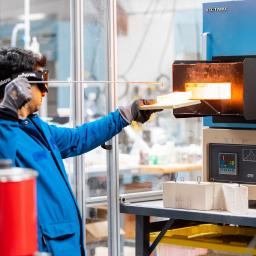 |
by Casey Crownhart on (#6QNWC)
This article is from The Spark, MIT Technology Review's weekly climate newsletter. To receive it in your inbox every Wednesday, sign up here. One way to know where a field is going? Take a look at what the sharpest new innovators are working on. Good news for all of us: MIT Technology Review's list of...
|
MIT Technology Review
| Link | https://www.technologyreview.com/ |
| Feed | https://www.technologyreview.com/stories.rss |
| Updated | 2025-12-19 07:18 |
 |
by Charlie Metcalfe on (#6QNWD)
Serhii Flash" Beskrestnov hates going to the front line. The risks terrify him. I'm really not happy to do it at all," he says. But to perform his particular self-appointed role in the Russia-Ukraine war, he believes it's critical to exchange the relative safety of his suburban home north of the capital for places where...
|
 |
by Rhiannon Williams on (#6QN3S)
This is today's edition ofThe Download,our weekday newsletter that provides a daily dose of what's going on in the world of technology. Google says it's made a quantum computing breakthrough that reduces errors The news: Google researchers claim to have made a breakthrough in quantum error correction, one that could pave the way for quantum...
|
 |
by Chris Lewis on (#6QMZH)
I was raised in the 1980s and '90s, and for my generation and generations before us, the public library was an equalizing force in every town, helping anyone move toward the American dream. In Chantilly, Virginia, where I grew up, it didn't matter if you didn't have a computer or your parents lacked infinite money...
|
 |
by Sophia Chen on (#6QMZJ)
Google researchers claim to have made a breakthrough in quantum error correction, one that could pave the way for quantum computers that finally live up to the technology's promise. Proponents of quantum computers say the machines will be able to benefit scientific discovery in fields ranging from particle physics to drug and materials design-if only...
|
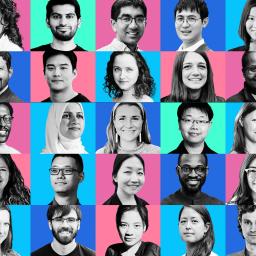 |
by Rhiannon Williams on (#6QM4K)
This is today's edition ofThe Download,our weekday newsletter that provides a daily dose of what's going on in the world of technology. Introducing: our 35 Innovators Under 35 list for 2024 Tomorrow's technologies are being developed today. And every year, we recognize young people from around the world who are leading the way through their...
|
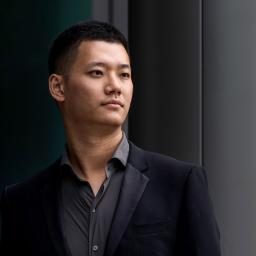 |
by Melissa Heikkilä on (#6QM4M)
Shawn Shan is one of MIT Technology Review's 2024 Innovators Under 35.Meet the rest of this year's honorees. When image-generating models such as DALL-E 2, Midjourney, and Stable Diffusion kick-started the generative AI boom in early 2022, artists started noticing odd similarities between AI-generated images and those they'd created themselves. Many found that their work...
|
 |
by Scott J Mulligan on (#6QM28)
This story is from The Algorithm, our weekly newsletter on AI. To get it in your inbox first,sign up here. Video game development has long been plagued by fear of the crunch"-essentially, being forced to work overtime on a game to meet a deadline. In the early days of video games, the crunch was often...
|
 |
by Rhiannon Williams on (#6QKAP)
Robots perceive the world around them very differently from the way humans do. When we walk down the street, we know what we need to pay attention to-passing cars, potential dangers, obstacles in our way-and what we don't, like pedestrians walking in the distance. Robots, on the other hand, treat all the information they receive...
|
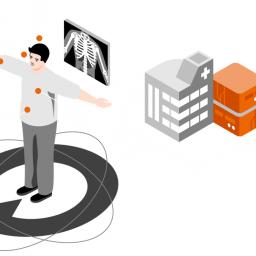 |
by Siemens Healthineers on (#6QK78)
In an era of unprecedented technological advancement, the health-care industry stands at a crossroad. As health expenditure continues to outpace GDP in many countries, health-care executives grapple with crucial decisions on investment prioritization for digitization, innovation, and digital transformation. The imperative to provide high-quality, patient-centric care in an increasingly digital world has never been more...
|
 |
by Rhiannon Williams on (#6QK51)
This is today's edition ofThe Download,our weekday newsletter that provides a daily dose of what's going on in the world of technology. Roblox is launching a generative AI that builds 3D environments in a snap What's new: Roblox has announced plans to roll out a generative AI tool that will let creators make whole 3D...
|
 |
by MIT Technology Review on (#6QHJM)
Celebrate 125 years of MIT Technology Review! This is a special year for MIT Technology Review, and we could not have reached this milestone without the support of our readers. With the release of our 125th anniversary issue, we are extending our gratitude of your loyalty by offering subscribers a chance to win a complimentary...
|
 |
by Scott J Mulligan on (#6QHG0)
Roblox plans to roll out a generative AI tool that will let creators make whole 3D scenes just using text prompts, it announced today. Once it's up and running, developers on the hugely popular online game platform will be able to simply write Generate a race track in the desert," for example, and the AI...
|
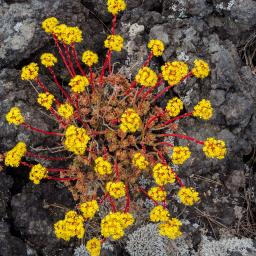 |
by Rhiannon Williams on (#6QH9Z)
This is today's edition ofThe Download,our weekday newsletter that provides a daily dose of what's going on in the world of technology. How plants could mine metals from the soil Nickel may not grow on trees-but there's a chance it could someday be mined using plants. Many plants naturally soak up metal and concentrate it...
|
 |
by Casey Crownhart on (#6QH4V)
Nickel may not grow on trees-but there's a chance it could someday be mined using plants. Many plant species naturally soak up metal and concentrate it in their tissues, and new funding will support research on how to use that trait for plant-based mining, or phytomining. Seven phytomining projects just received $9.9 million in funding...
|
 |
by MIT Technology Review Insights on (#6QGB4)
The Human Genome Project, SpaceX's rocket technology, and Tesla's Autopilot system may seem worlds apart in form and function, but they all share a common characteristic: the use of open-source software (OSS) to drive innovation. Offering publicly accessible code that can be viewed, modified, and distributed freely, OSS expedites developer productivity and creates a collaborative...
|
 |
by Rhiannon Williams on (#6QGB5)
This is today's edition ofThe Download,our weekday newsletter that provides a daily dose of what's going on in the world of technology. A brief guide to the greenhouse gases driving climate change Sulfur hexafluoride (SF6) is used in high-voltage equipment on the grid. It's also, somewhat inconveniently, a monster greenhouse gas. Greenhouse gases are those...
|
 |
by Casey Crownhart on (#6QG68)
This article is from The Spark, MIT Technology Review's weekly climate newsletter. To receive it in your inbox every Wednesday, sign up here. For the last week or so, I've been obsessed with a gas that I'd never given much thought to before. Sulfur hexafluoride (SF6) is used in high-voltage equipment on the grid. It's...
|
 |
by Rhiannon Williams on (#6QFBC)
This is today's edition ofThe Download,our weekday newsletter that provides a daily dose of what's going on in the world of technology. The UK is building an alarm system for climate tipping points The news: The UK's new moonshot research agency just launched an 81 million ($106 million) program to develop early warning systems to...
|
 |
by James Temple on (#6QF48)
The UK's new moonshot research agency just launched an 81 million ($106 million) program to develop early warning systems to sound the alarm if Earth gets perilously close to crossing climate tipping points. A climate tipping point is a threshold beyond which certain ecosystems or planetary processes begin to shift from one stable state to...
|
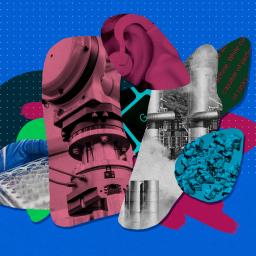 |
by Amy Nordrum on (#6QEMV)
To tackle complex global problems such as preventing disease and mitigating climate change, we're going to need new ideas from our brightest minds. Every year, MIT Technology Review identifies a new class of Innovators Under 35 taking on these and other challenges. On September 10, we will honor the 2024 class of Innovators Under 35....
|
 |
by James O'Donnell on (#6QEMW)
The Olympic Games in Paris just finished last month and the Paralympics are still underway, so the 2028 Summer Olympics in Los Angeles feel like a lifetime from now. But the prospect of watching the games in his home city has Josh Kahn, a filmmaker in the sports entertainment world who has worked in content...
|
by Rhiannon Williams on (#6QEEX)
This is today's edition ofThe Download,our weekday newsletter that provides a daily dose of what's going on in the world of technology. AI's impact on elections is being overblown -Felix M. Simon is a research fellow in AI and News at the Reuters Institute for the Study of Journalism; Keegan McBride is an assistant professor...
 |
by James O'Donnell on (#6QEAH)
This story is from The Algorithm, our weekly newsletter on AI. To get it in your inbox first,sign up here. This back-to-school season marks the third year in which AI models like ChatGPT will be used by thousands of students around the globe (among them my nephews, who tell me with glee each time they...
|
 |
by Felix M. Simon, Keegan McBride, and Sacha Altay on (#6QEAJ)
This year, close to half the world's population has the opportunity to participate in an election. And according to a steady stream of pundits, institutions, academics, and news organizations, there's a major new threat to the integrity of those elections: artificial intelligence. The earliest predictions warned that a new AI-powered world was, apparently, propelling us...
|
 |
by Rhiannon Williams on (#6QDQS)
This is today's edition ofThe Download,our weekday newsletter that provides a daily dose of what's going on in the world of technology. How personhood credentials" could help prove you're a human online As AI models become better at mimicking human behavior, it's becoming increasingly difficult to distinguish between real human internet users and sophisticated systems...
|
 |
by Rhiannon Williams on (#6QDP3)
As AI models become better at mimicking human behavior, it's becoming increasingly difficult to distinguish between real human internet users and sophisticated systems imitating them. That's a real problem when those systems are deployed for nefarious ends like spreading misinformation or conducting fraud, and it makes it a lot harder to trust what you encounter...
|
 |
by Casey Crownhart on (#6QDMM)
The power grid is underpinned by a single gas that is used to insulate a range of high-voltage equipment. The problem is, it's also a super powerful greenhouse gas, a nightmare for climate change. Sulfur hexafluoride (or SF6) is far from the most common gas that warms the planet, contributing around 1% of warming to...
|
 |
by Rhiannon Williams on (#6QBZC)
This is today's edition ofThe Download,our weekday newsletter that provides a daily dose of what's going on in the world of technology. How machine learning is helping us probe the secret names of animals The news: Do animals have names? It seems so, after new research appears to have discovered that small monkeys called marmosets...
|
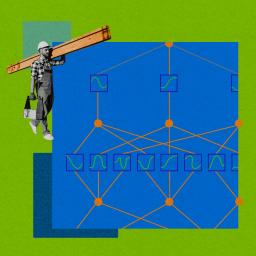 |
by Anil Ananthaswamy on (#6QBWV)
A tweak to the way artificial neurons work in neural networks could make AIs easier to decipher. Artificial neurons-the fundamental building blocks of deep neural networks-have survived almost unchanged for decades. While these networks give modern artificial intelligence its power, they are also inscrutable. Existing artificial neurons, used in large language models like GPT4, work...
|
 |
by Scott J Mulligan on (#6QBAJ)
Your breath can give away a lot about you. Each exhalation contains all sorts of compounds, including possible biomarkers for disease or lung conditions, that could give doctors a valuable insight into your health. Now a new smart mask, developed by a team at the California Institute of Technology, could help doctors check your breath...
|
 |
by Antonio Regalado on (#6QBDA)
Do animals have names? According to the poet T.S. Eliot, cats have three: the name their owner calls them (like George); a second, more noble one (like Quaxo or Cricopat); and, finally, a deep and inscrutable" name known only to themselves that no human research can discover." But now, researchers armed with audio recorders and...
|
 |
by Sarah Ward on (#6QB7H)
When someone loses part of a leg, a prosthetic can make it easier to get around. But most prosthetics are static, cumbersome, and hard to move. Now a new neural interface developed by MIT researchers and colleagues connects a bionic lower limb to nerve endings in the thigh, allowing it to be controlled by the...
|
 |
by MIT Technology Review Insights on (#6QB4H)
Cloud has become a given for most organizations: according to PwC's 2023 cloud business survey, 78% of companies have adopted cloud in most or all parts of the business. These companies have migrated on-premises systems to the cloud seeking faster time to market, greater scalability, cost savings, and improved collaboration. Yet while cloud adoption is...
|
 |
by Rhiannon Williams on (#6QB1T)
This is today's edition ofThe Download,our weekday newsletter that provides a daily dose of what's going on in the world of technology. Kamala Harris should stand with tech workers, not their bosses -Stephen McMurtry is a Google Software Engineer and Communications Chair of the Alphabet Workers Union-CWA Tangled up in the contest to be the...
|
 |
by Stephen McMurtry on (#6QAXY)
Tangled up in the contest to be the next US president, there is another battle brewing: Silicon Valley vs. Silicon Valley. In Donald Trump's corner are venture capitalists like Marc Andreessen and Peter Thiel, along with executives like Elon Musk. In the other are execs like LinkedIn founder Reid Hoffman and SV Angel investing mogul...
|
 |
by Casey Crownhart on (#6QA96)
This article is from The Spark, MIT Technology Review's weekly climate newsletter. To receive it in your inbox every Wednesday, sign up here. Last year's Canadian wildfires smashed records, burning about seven times more land in Canada's forests than the annual average over the previous four decades. Eight firefighters were killed and 180,000 people displaced....
|
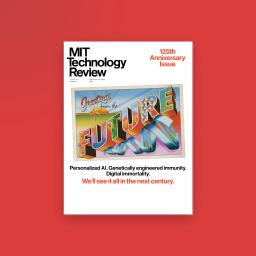 |
by Rhiannon Williams on (#6QA36)
This is today's edition ofThe Download,our weekday newsletter that provides a daily dose of what's going on in the world of technology. Introducing: the 125th Anniversary issue With this issue, we wanted to celebrate our milestone as a publication without dwelling too much on our own past. Victory laps are for race cars, not magazines....
|
 |
by Sean Micheals on (#6QA0Y)
The year is 2149 and people mostly live their lives on rails." That's what they call it, on rails," which is to live according to the meticulous instructions of software. Software knows most things about you-what causes you anxiety, what raises your endorphin levels, everything you've ever searched for, everywhere you've been. Software sends messages...
|
 |
by Orji Sunday on (#6QA0Z)
Last year, as the harvest season drew closer, Olabokunde Tope came across an unpleasant surprise. While certain spots on his 70-hectare cassava farm in Ibadan, Nigeria, were thriving, a sizable parcel was pale and parched-the result of an early and unexpected halt in the rains. The cassava stems, starved of water, had withered to straw....
|
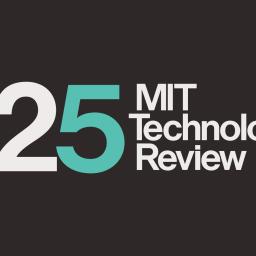 |
by Elizabeth Bramson-Boudreau on (#6QA10)
The magazine you now hold in your hands is 125 years old. Not this actual issue, of course, but the publication itself, which launched in 1899. Few other titles can claim this kind of heritage-the Atlantic, Harper's, Audubon (which is also turning 125 this year), National Geographic, and Popular Science among them. MIT Technology Review...
|
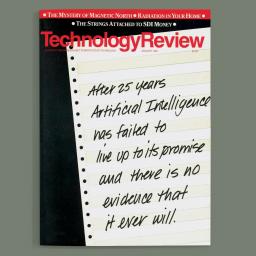 |
by Bill Gourgey on (#6QA11)
If a machine is to interact intelligently with people, it has to be endowed with an understanding of human life." -Dreyfus and Dreyfus Bold technology predictions pave the road to humility. Even titans like Albert Einstein own a billboard or two along that humbling freeway. In a classic example, John von Neumann, who pioneered modern...
|
 |
by Lina Zeldovich on (#6QA12)
DJ Tan, cofounder of the Singaporean startup Prefer Coffee, pops open a bottle of oat latte and pours some into my cup. The chilled drink feels wonderfully refreshing in Singapore's heat-and it tastes just like coffee. And that's impressive, because there isn't a single ounce of coffee in it. It turns out that our beloved...
|
 |
by Mara Johnson-Groh on (#6QA13)
Much of the western United States relies on winter snowpack to supply its rivers and reservoirs through the summer months. But with warming temperatures, less and less snow is falling-a recent study showed a 23% decline in annual snowpack since 1955. By some estimates, runoff from snowmelt in the western US could decrease by a...
|
 |
by Mat Honan on (#6Q9YQ)
Welcome to our 125th anniversary issue! With this issue, we wanted to celebrate our milestone as a publication without dwelling too much on our own past. Victory laps are for race cars, not magazines. Instead, we decided to try to use history as a way to explore what things may look like over the next...
|
 |
by Bryan Gardiner on (#6Q9YR)
In 1983, while on a field recording assignment in Kenya, the musician and soundscape ecologist Bernie Krause noticed something remarkable. Lying in his tent late one night, listening to the calls of hyenas, tree frogs, elephants, and insects in the surrounding old-growth forest, Krause heard what seemed to be a kind of collective orchestra. Rather...
|
 |
by Cliff Kuang on (#6Q9YS)
If you took a walk in Hayes Valley, San Francisco's epicenter of AI froth, and asked the first dude-bro you saw wearing a puffer vest about the future of the interface, he'd probably say something about the movie Her, about chatty virtual assistants that will help you do everything from organize your email to book...
|
 |
by Jennifer Chu on (#6Q9M0)
Saturn's moon Titan is the only body in the solar system besides Earth that has active lakes and seas-in this case thought to have formed as liquid methane and ethane flooded a landscape crisscrossed with river valleys. Now MIT geologists have found evidence that those mysterious features may be shaped by waves. Until now, scientists...
|
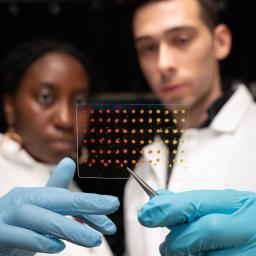 |
by Jennifer Chu on (#6Q9M1)
Boosting the performance of solar cells and other devices will require novel electronic materials that researchers are working to identify with the help of AI. Now a computer vision technique developed by MIT engineers offers a speedy way to confirm that such materials perform as expected-one of the biggest bottlenecks in the screening process. The...
|
 |
by Adam Zewe on (#6Q9M2)
Social media platforms are often urged to fight the spread of misinformation through content moderation, but two MIT-affiliated researchers are proposing an alternative: empowering users themselves to identify which information sources are trustworthy. The Trustnet browser extension, built by EECS professor David Karger and Farnaz Jahanbakhsh, SM '21, PhD '23, an assistant professor at the...
|